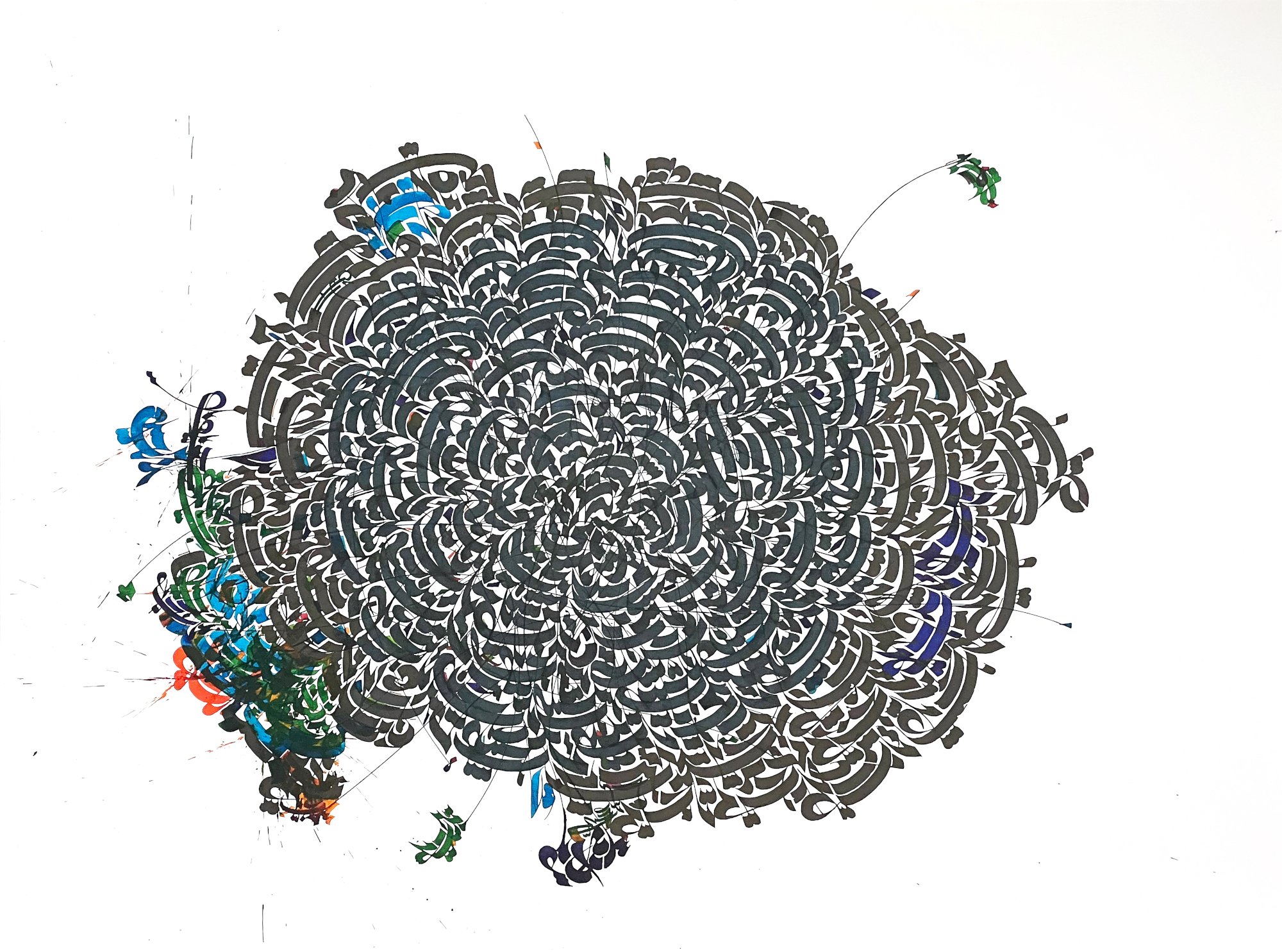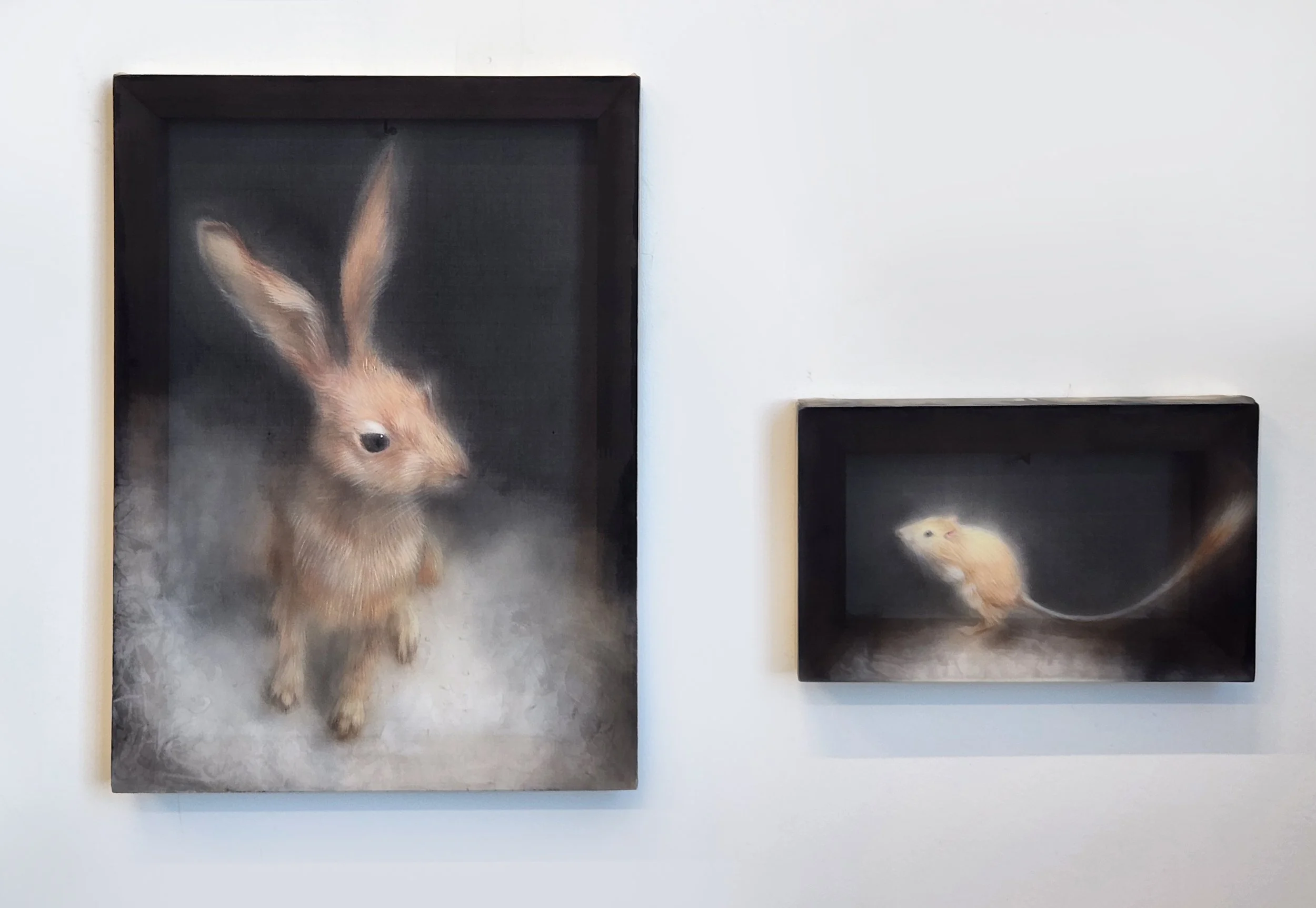10 Questions with Mariken Heijwegen
After Mariken Heijwegen finished the KABK in The Hague, in the direction of Fashion and Textiles, she became a stylist and ended up as an art teacher at a high school in Rotterdam.
Her passion for painting is her way of expressing her feelings. Her hands help her transform her thoughts on the canvas, and she often paints on wood because it is a great hard and matte material.
Mariken Heijwegen - Portrait
ARTIST STATEMENT
"All my work comes from unknown places in my head.
I paint heads, self-portraits. My hands help me transform my emotions on the canvas—my language. Sometimes, an awful lot happens in a head, and no one knows what's going on there except you. It can be dark, scary, filled with fears and doubts, obstacles, and everything that, I think, is human. Last few months, I was in a dark place, and it was very scary. It was dark in my head, and it felt like an explosion of all my fears.
Every day I painted a portrait of myself at that time. My paintings reflect feelings like panic attacks, fear, anxiety, insecurities, and all mixed emotions. Slowly the paintings are less capricious and less vague. There is slowly coming a person in front of the painting. That person is me.
Creativity saved me and helped to deal with my anger and aggression, and I can slowly accept who I am. I want to show the world that you don't have to be ashamed of a mental illness, and I hope to break taboos. It makes me vulnerable, and I think that's a good thing. I want to make the invisible visible.
Welcome to my mental journey, and let's start a dialogue." - Mariken Heijwegen
Blue monday © Mariken Heijwegen
Limited edition art collectors’ book
INTERVIEW
First of all, tell our readers a little bit about you. Who are you, and how did you start experimenting with images?
My name is Mariken Heijwegen from the Netherlands. I am 47 years old. When I finished Art school, fashion, and design, I traveled around the world as a fashion stylist. I no longer thought that world was for me, and I became an art teacher at a high school. There I teach the children to know and deal with their emotions through art. I have always kept painting because that is my escape from life.
What is your personal aim as an artist?
My goal is inner peace. I get that by painting. But I would like to see my paintings end up worldwide and that dialogues arise. And in teaching, I achieve goals when children are at peace with themselves and their emotions.
Conflict © Mariken Heijwegen
White shades of pale © Mariken Heijwegen
Can you tell us about the process of creating your work? What aspect of your work do you pay particular attention to?
I painted on wood. It is a nice material that is matte and hard. Acrylic paint dries very quickly on wood. The images remain beautiful on the wood, and it looks chic on the wall. I pay a lot of attention to the background of the painting. There must be depth, and the colors must speak a language with each other. It must flow. I often use wallpaper or paper from books to use as a starting point. My background is as important as the image.
You work with painting, and especially with self-portraits. Why did you choose this medium?
Painting is my way of expressing my feelings. You can paint layer upon layer, and you can't do that with drawing, for example. The fast way suits me as I am impatient by nature. With a brush and paint, you can achieve something good very quickly. This medium, therefore, suits me.
Tell us more about your series of self-portraits. How did you come up with this idea?
The self-portraits reflect my feelings. I've been ill for a long time-a nervous breakdown accompanied by anxiety and panic attacks. It was, and still is, very scary and awful to experience. To get through this period, I painted a portrait every day. Sometimes it is very ugly and bad to look at, but that was how that period was too. Everything occurs in it: fear, panic, fear of boxing, fear of going mad, panic, incomprehension, and also loneliness. Everything had to come out of my head, and I kept my thoughts out of my head with painting. I had to escape the hell called mental illness.
Living violin © Mariken Heijwegen
How much of your personal life is reflected in your paintings? And how does it help you further develop your art?
My series of self-portraits are my life. It comes from personal life. I am my paintings, and my paintings are me. It takes me further to understand and accept my life. It takes me further in the creative process of my paintings. Every disadvantage has an advantage. My dark period in my life allowed me to paint, and my paintings took me out of that dark period. That is the circle of life.
Where do you draw inspiration from for your work? Do you have any specific reference, or artist, you particularly like?
I like a couple of artists. But for me, it's not an inspiration for my own work. Frida Kahlo was such a strong woman. At the end of her life, she painted with the brush in her mouth. That's magic.
Furthermore, my inspiration is my feelings and emotions that I experience and want to transform on the canvas.
But I can also be very happy with a colour combination on a pavement tile, traffic sign, nature, or wallpaper. Then I'm ON right away.
What is your favorite experience as an artist so far?
I meet so many like-minded people. That makes me grow and gives me the right push in the right direction. I think it's wonderful that curators understand my work and offer me opportunities that I wouldn't have had otherwise. But the most beautiful thing is that the viewers recognize themselves in my paintings and feel understanding. To feel seen.
Speechless © Mariken Heijwegen
Thick layers © Mariken Heijwegen
What do you think about the art community and market?
I don't think I should find anything. People are as they are. I see and feel that it is about money, of course, but I connect with the people who really feel my art. But what I don't understand is that sometimes people are famous and the work doesn't speak. It's a trick to imitate something that already exists. Then it's commerce. I do not like that. Art is a craft.
And finally, what are you working on now, and what are your plans for the future? Anything exciting you can tell us about?
Since my entire oeuvre consists of emotions and normalizing them, I am now working on old portrait photos. I edit them with paint. They are old black and white photos. I want to show that madness has always existed and is not subject to time. In the past, people were hidden in madhouses or burned alive. I feel so sorry for those people, and I feel very rich that I can take my medication every day to feel good. I am free, and with this new project, I give a stage to people who have never felt free because of a mental illness.
























